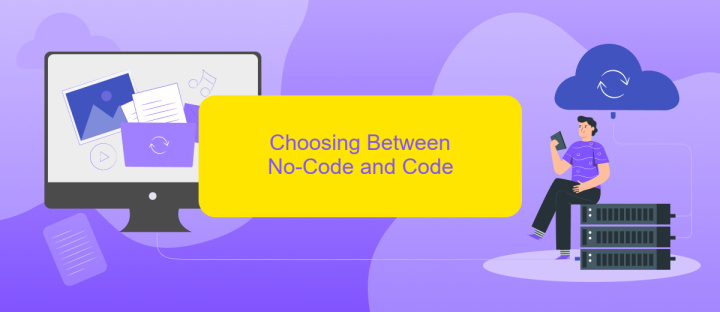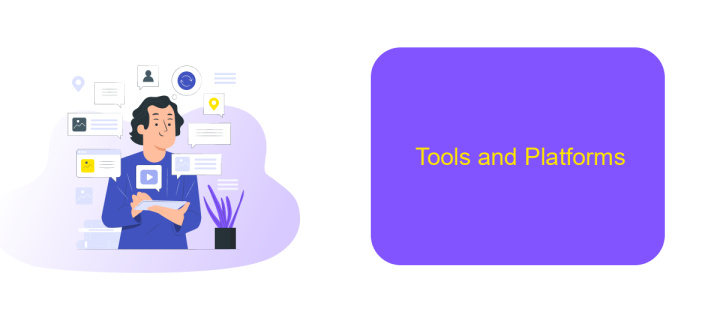No-Code vs Code
In today's rapidly evolving tech landscape, the debate between no-code and traditional coding has never been more relevant. No-code platforms empower non-developers to create applications with minimal technical skills, while traditional coding offers unparalleled flexibility and control. This article delves into the pros and cons of each approach, helping you decide which is best suited for your specific needs and projects.
Understanding No-Code and Code
No-Code platforms empower users to create applications without writing any code. They provide visual interfaces and drag-and-drop functionalities, making it accessible for non-developers to build software solutions. These platforms are ideal for small businesses and startups that need to deploy solutions quickly without investing heavily in technical resources.
- No-Code tools offer pre-built templates and modules.
- They enable faster development and deployment cycles.
- Non-technical users can easily make updates and changes.
On the other hand, traditional coding offers more flexibility and control over the application development process. Developers can create highly customized solutions tailored to specific needs. While coding requires a higher level of expertise, it allows for more complex functionalities and integrations. For instance, services like ApiX-Drive can help developers set up seamless integrations between various applications, enhancing the overall functionality of their custom-built software.
Advantages and Disadvantages

No-Code platforms offer the advantage of rapid development and ease of use, allowing non-technical users to build applications without writing a single line of code. This democratizes the development process, making it accessible to a broader audience. Additionally, No-Code solutions often come with pre-built templates and integrations with popular services like ApiX-Drive, which simplifies the process of connecting different applications and automating workflows. This can significantly reduce development time and costs, making it an attractive option for startups and small businesses.
However, No-Code platforms also have their disadvantages. They may lack the flexibility and customization options that traditional coding offers, potentially limiting the complexity of applications that can be built. Moreover, as the needs of a business grow, the limitations of No-Code solutions may become more apparent, necessitating a transition to custom-coded applications. This can result in additional costs and time investment. Furthermore, reliance on third-party services for integrations can introduce dependencies and potential security risks, making it crucial to carefully evaluate the chosen No-Code platform and its ecosystem.
Choosing Between No-Code and Code

Choosing between no-code and code solutions depends on various factors, including your project requirements, technical expertise, and time constraints. No-code platforms offer a user-friendly interface for building applications without needing to write code, making them ideal for quick prototyping and for users with limited technical skills. On the other hand, traditional coding provides greater flexibility and customization, suitable for complex projects that require specific functionalities.
- Project Complexity: No-code is suitable for simple applications, while code is better for complex, custom solutions.
- Technical Skills: No-code platforms are user-friendly and require minimal technical knowledge, whereas coding requires programming expertise.
- Time Constraints: No-code allows for rapid development, while coding may take longer but offers more control over the final product.
- Integration Needs: No-code platforms like ApiX-Drive can simplify integrations, whereas custom code may offer more tailored integration solutions.
Ultimately, the choice between no-code and code should align with your project goals, available resources, and long-term maintenance plans. Evaluating these factors will help you make an informed decision that best suits your needs.
Tools and Platforms

When it comes to choosing between no-code and code solutions, understanding the tools and platforms available is crucial. No-code platforms empower users to create applications without writing a single line of code, making them accessible to non-developers. These platforms often come with drag-and-drop interfaces, pre-built templates, and intuitive design elements.
On the other hand, traditional coding platforms offer unparalleled flexibility and customization. Developers can write custom code to build applications tailored to specific needs, ensuring optimal performance and scalability. While these platforms require programming knowledge, they provide the freedom to create highly complex and unique solutions.
- No-Code Platforms: Bubble, Webflow, Airtable
- Code Platforms: Visual Studio Code, GitHub, IntelliJ IDEA
- Integration Tools: ApiX-Drive, Zapier, Integromat
Integration tools like ApiX-Drive bridge the gap between various software applications, enabling seamless data flow and automation. Whether you choose a no-code or code approach, leveraging the right tools and platforms can significantly enhance your productivity and efficiency.


Future Trends
The future of No-Code and Code development is set to be defined by an increasing convergence of the two paradigms. As technology evolves, No-Code platforms are becoming more sophisticated, enabling users to create more complex applications without writing a single line of code. This trend is expected to democratize software development, allowing individuals with no technical background to bring their ideas to life. Meanwhile, traditional coding will continue to be essential for building highly customized and scalable solutions, ensuring that both approaches complement each other rather than compete.
Integration capabilities will play a crucial role in this landscape. Services like ApiX-Drive are already paving the way by offering seamless integration solutions that connect various apps and systems without requiring extensive coding knowledge. As businesses increasingly rely on a diverse set of tools to manage their operations, the ability to integrate these tools effortlessly will be paramount. This shift will likely lead to a hybrid development environment where No-Code and Code solutions coexist, providing flexibility and efficiency to meet diverse business needs.
FAQ
What is the main difference between No-Code and Code development?
Who can benefit from using No-Code platforms?
Can No-Code platforms handle complex projects?
How can I integrate different applications without coding?
Is it possible to transition from No-Code to Code development later?
Apix-Drive will help optimize business processes, save you from a lot of routine tasks and unnecessary costs for automation, attracting additional specialists. Try setting up a free test connection with ApiX-Drive and see for yourself. Now you have to think about where to invest the freed time and money!

